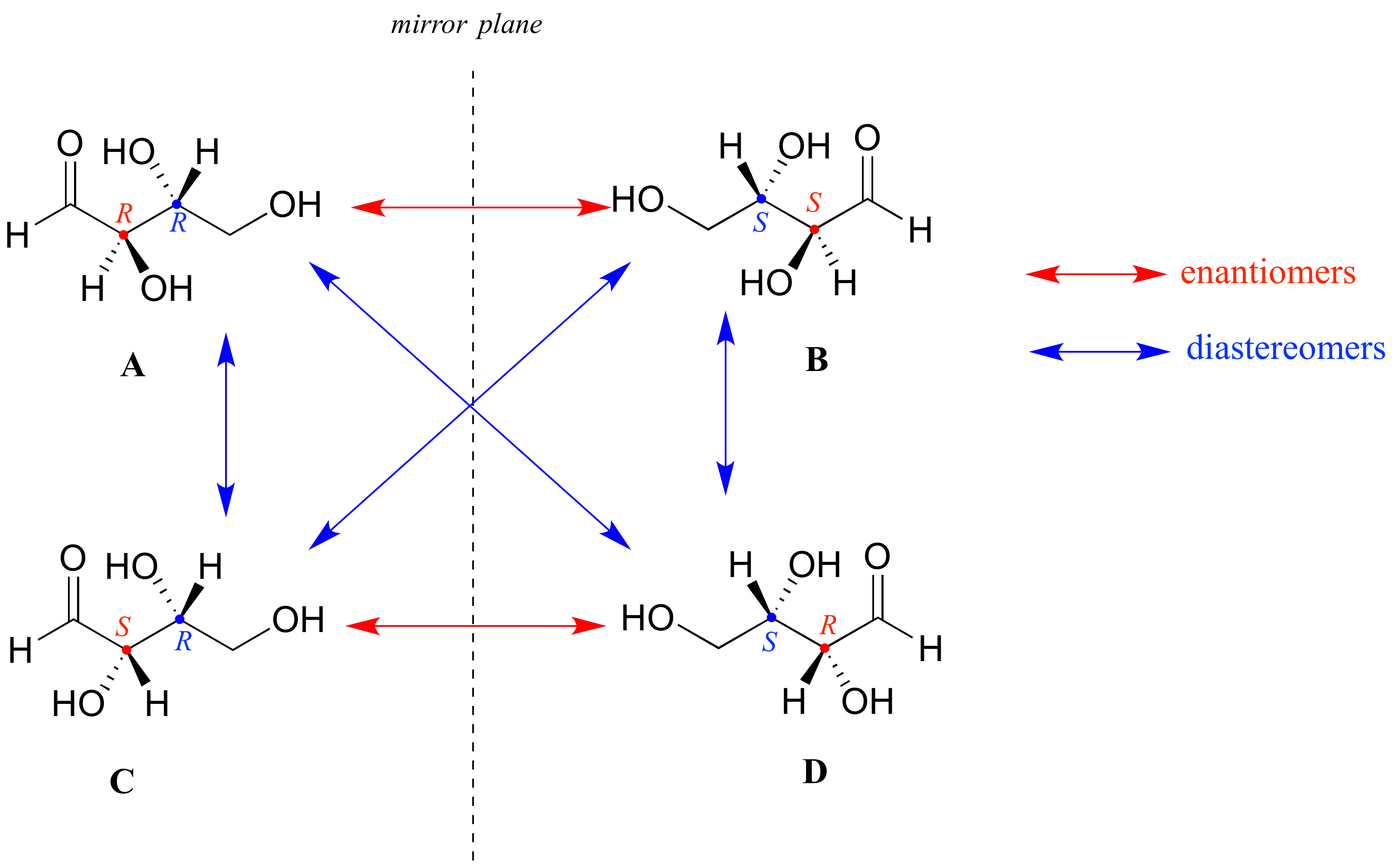6.4: Діастереомери - більше одного хірального центру
- Page ID
- 23637
Мета навчання
- розпізнавати та класифікувати діастереомери
Діастереомери - це стереоізомери з двома або більше хіральними центрами, які не є енантіомерами. Діастереомери мають різні фізичні властивості (температури плавлення, температури кипіння і щільності). Залежно від механізму реакції діастереомери можуть виробляти різні стереохімічні продукти.
Вступ
Поки що ми аналізували сполуки з єдиним хіральним центром. Далі звернемо увагу на ті, які мають множинні хіральні центри. Почнемо з деяких стереоізомерних чотиривуглецевих цукрів з двома хіральними центрами.

Щоб уникнути плутанини, ми просто будемо посилатися на різні стереоізомери великими літерами.
Подивіться спочатку на з'єднання А нижче. Обидва хіральні центри в мають конфігурацію R (ви повинні підтвердити це самі!). Дзеркальне відображення з'єднання A - це з'єднання B, яке має конфігурацію S в обох хіральних центрах. Якби ми забрали з'єднання A, переверніть його і поклали поруч із з'єднанням B, ми побачили б, що вони не є супернеможливими (знову ж таки, підтвердьте це для себе своїми моделями!). А і В - непереборні дзеркальні зображення: іншими словами, енантіомери.

Тепер подивіться на з'єднання C, в якому конфігурація S в хіральному центрі 1 і R в хіральному центрі 2. Сполуки А і С є стереоізомерами: вони мають однакову молекулярну формулу і однакову зв'язність зв'язку, але різне розташування атомів в просторі (нагадаємо, що це визначення терміна «стереоізомер»). Однак вони не є дзеркальним відображенням один одного (підтвердьте це своїми моделями!) , І тому вони не є енантіомерами. За визначенням, вони є діастереомерами один одного.
Зверніть увагу, що сполуки С і В також мають діастереомерний зв'язок, за тим же визначенням.
Отже, з'єднання А і В - це пара енантіомерів, а з'єднання С - діастереомер обох. Чи має сполука С свій енантіомер? З'єднання D - це дзеркальне відображення сполуки С, і два не є накладними. Тому C і D - пара енантіомерів. З'єднання D також є діастереомером сполук А і В.
Спочатку це також може здатися дуже заплутаним, але є кілька простих ярликів для аналізу стереоізомерів: